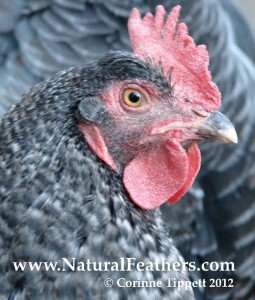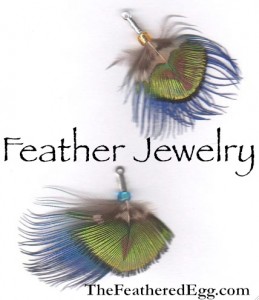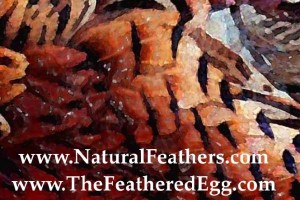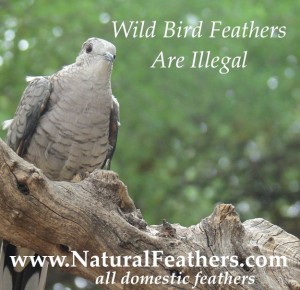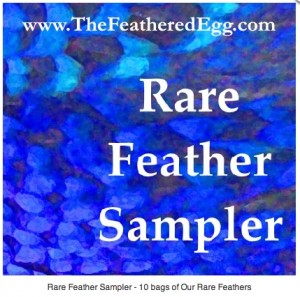
These blue feathers are the iridescent flash from a Melanistic Mutant Pheasant rooster… but other blue feathers are not just blue.
When we started selling natural feathers for arts and crafts, we started to wonder what made blue feathers blue. Right about the time we realized that black feathers were not always black.
Feather color is not always simply color… it is often far more complicated than just a pigment. The color elements of the feathers are serving a purpose – for the bird, or in a grander plan of world conquest through brilliant feather display.
This makes using feathers for jewelry even more exciting, because they come to our art with a history of their own – from the bird.
Blue was a particular question regarding bird feathers, because it isn’t a color that comes to the feather from the bird’s diet. It can often be a refraction, scything off a feather that looks black, but flashes blue in direction sunlight with a certain graceful turn of wing.
But it can also be molecular. Richard Prum, of Yale University, studied cotinga feathers and discovered that the blue color was a result of red and yellow wavelengths of light canceling each other out as they bounced off the internal cellular structure of the feather.
It still looks blue to us, but I think it’s exceptionally cool that feathers are so cool, inside and out.
Visit our site for a huge selection of cruelty-free feathers from our own birds, and from like-minded small scale backyard farmers. Super cool!

